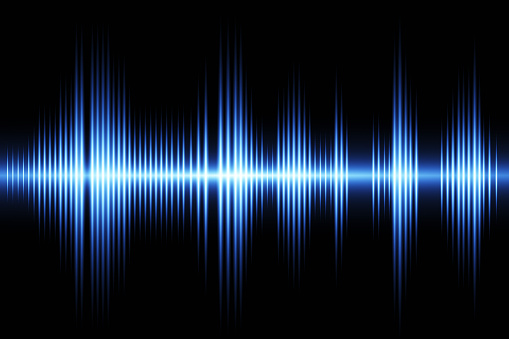Diffraction of sound wave take place in various different sound items like loudspeakers and woofers. In this article we will discuss about various diffraction of sound examples.
Here are few diffraction of sound examples given below;
Sound from loudspeakers
Noise from a loudspeaker would disperse outward instead of flowing ahead and move forward as a result of diffraction. Bass frequencies will expand outward greater in comparison to high frequencies owing to their greater wavelengths relative to the capacity of the loudspeaker.
Diffraction phenomena can influence one’s selection of loudspeakers for individual enjoyment. Smaller loudspeakers are frequently advertised as sounding as nice as huge loudspeakers. For scientific grounds, there is cause to be dubious about these statements. Since their size contrasts quite favorably with the wavelengths of such noises, big speakers are intrinsically highly efficient in delivering bass frequencies into space.
Even though the fundamental issue is solved by electrical equalization of the noise source to the speakers and the configuration of the bridge circuits that distribute the signal to the various parts of the loudspeaker, diffraction’s consequences cannot be avoided. The bass frequencies shall be dispersed out much greater in comparison to the peak frequencies by little loudspeakers.
If one constructs tiny and compact speakers, the gap between both the roughly equivalent arrangements of ups and down gets more evident. So, while you could hear equal sound right on with the speaker, the upper frequencies would fall off quicker in comparison to the low as one moves away from the axis. In practice, this confines the audience’s hearing range.
When any loudspeakers are only for you, one might be delighted with the compact loudspeakers since one can place himself in the optimal listening place. When one gets visitors, however, guests will be disappointed due to the larger off-axis changes from the little loudspeakers.
The difference in sound between a near lightning hit and a far one
Thunder from a nearby bolt of lightning would sound like a crisp boom, suggesting that there is plenty of large noise present. Thunder across a long distance will be heard as a low rumbling because the long wavelengths may twist around barriers to reach you. Other elements, like increased air retention of high frequencies, have a role in the sensation, but diffraction is one of them.
Diffraction of sound about edges or via doorways
We detect noise diffracting about corners or via door gaps, enabling us to catch others’ noise in neighboring rooms from where others are talking to us. Several forest-dwelling birds make use of long-wavelength sound waves diffractive capacity. Owl, for example, can converse over great ranges because their long-wavelength guffaws are capable to diffract over forest trees and go further in comparison to the songbirds’ short-wavelength tweets.
Strong (short wavelength) noises always travel farther than cheap (long wavelength) ones. A sound wave is unaffected by a barrier; the wave just twists about it. If a radio is playing in a house with the entry open, the sound will twist about the surfaces bordering the entrance. Diffraction is the term for the bending of a wave. Diffraction occurs in all waves, not only sound waves.
The music from the radio can be audible directly in front of the entrance without diffraction. Rather, the sound waves of the radio cause longitudinal vibrations in the air in the entryway. This implies that each air particle is a sound wave generator in and of itself. As a consequence, each particle generates a sound wave and emits it in a spherical pattern.
According to the place where one stand, the noise outside the house has variable levels of strength. The strength is most just in front of the doorway’s center. The strength reduces as you walk out from the center until it reaches zero, then raises to a peak, reaches zero, raises to a peak so on. As you move further from the center, every maximum becomes quieter. Based on the object that waves are twisting about, they diffract in various ways.
Hunt by bats
Bats utilize ultrasonic vibrations with a high frequency (low wavelength) to improve their hunting skills. A bat’s usual prey is a moth, which is a little insect measuring just a few millimeters in length. Bats detect the existence of other bats in the air via ultrasonic echolocation. So, what’s the point of ultrasound? The solution is found in diffraction physics.
When a beam’s wavelength is less than the wavelength of a barrier it meets, the wave can no longer diffract about the barrier and rather reflects off it. Bats employ ultrasonic waves with wavelengths that are shorter in comparison to their prey’s size. When such sound waves hit the prey, rather than diffracting about it, they would reflect off of it.
Coordination of group of elephants
Elephants interact with one other across vast distances by emitting infrasonic vibrations of extremely weak frequency, according to researchers. Elephants usually move in vast groups that can often be dispersed by many kilometers.
Researchers who had seen elephant migrations through the sky have been both fascinated and confused by elephants’ capacity to execute very coordinated motions at the start and completion of these groups.
The elder at the head of the group may take a right turn, which is quickly pursued by elephants in the back of the group taking the same right turn. Regardless of the assumption that the elephants’ view of each other is restricted, these coordinated motions.
They very lately discovered that infrasonic interaction precedes coordinated motions. Although low-frequency sound waves cannot diffract through dense foliage, elephants’ high-frequency noises have enough diffractive capacity to converse across vast distances.
Frequently asked questions | FAQs
Q. What is the primary distinction between a sound and a radio wave?
Ans. Radio waves are electromagnetic waves that propagate without the use of a channel. In space, they may go vast distances. Because sound waves are mechanical waves, they can’t move without a medium. That is why you can’t hear anything in space.
Q. Why are sound waves more readily diffracted than light waves?
Ans. Because of wavelength difference.
Sound wave diffraction is highly noticeable in everyday life than light wave diffraction because sound waves have a significantly longer wavelength in comparison to visible light waves. The gap size must be equivalent to the wavelength of the light or sound waves for diffraction to arise.
Q. What are the applications of sound waves?
Ans. Detecting items
Items are detected using ultrasonic waves. The sound of a buzzing phone, a blaring horn, or a relative’s vocal are all hints of the importance of sound. Sound, on the other hand, has applications beyond conversation. Several animals and people, for example, utilize reflected ultrasonic waves to identify things.
Q. What role do sound waves play in our daily lives?
Ans. In communication, cleaning jewellery and teeth etc.
Ultrasonic or high-frequency sound waves have been used to clean jewellery and teeth, assist animals in communicating, and assist doctors in observing interior systems. It’s additionally been used to break up kidney and gallstones and eliminate them.
The doppler effect may be used by burglar alarms to track movement in space.
Also Read:
- Examples of convection
- Reallife resonance examples everyday faq
- Ecosyetm examples
- Statistics examples
- Reflection of light examples
- Thermal equilibrium examples
- Irreversible chemical change examples
- Double bond examples
- Vision statement examples
- Polar covalent bond examples
I am Sakshi Sharma, I have completed my post-graduation in applied physics. I like to explore in different areas and article writing is one of them. In my articles, I try to present physics in most understanding manner for the readers.



